





 |
 |
 |
 |
 |
 |
| Zane Paxton | profile | all galleries >> Yucatan Quest >> Celestun | tree view | thumbnails | slideshow |
Celestún Biosphere Reserve
Painted Stone
Celestun is famous for its river or ria, beautiful flamingo colonies, fresh water springs, and calm beaches. It also has a 36 foot tall lighthouse and salt marshes near the town. The most popular thing to do here is hire a boat to travel the Ría de Celestún and see the flamingos.
On July 19th, 1979, the Federal Government decreed the Celestun Wildlife Refuge. Because of its importance as the main feeding area for the American Flamingo and countless species of waterfowl and shorebirds its status was upgraded to that of a Special Biosphere Reserve in 1989. The Special Biosphere Reserves are representative zones of one or more ecosystems that haven't been altered by man.
The Birds
Over 300 bird species can be found in Celestún's Biosphere Reserve: cardinals, orioles, motmots, woodpeckers, hummingbirds, flycatchers, kingfishers, cormorants, magnificent frigate birds, herons, egrets, white ibises, wood storks, ospreys, hawks, vultures, sandpipers, roadrunners, owls, pelicans, etc. There are some endemic birds such as the Yucatan Wren, the Black-throated Bobwhite and the Mexican Sheartail Hummingbird. Celestun is considered the fourth largest wintering ground for ducks in the Gulf region. In winter you're likely to observe over 13 migrant duck species. But surely the most popular bird and the most sought after is the Pink Flamingo (Phoenicopterus ruber). The Flamingo is one of the most graceful and spectacular birds, but also one that depends on a fragile ecosystem - hypersaline lagoons - for survival. The Northern Hemisphere's only mainland flamingo population lives along the North and West Coast of the Yucatan Peninsula. The flamingo feeds and nests in flocks of several thousand birds huddled together in knee-deep water or wading along muddy salt flats. It feeds on small organisms that it filters from the water through a complex mechanism in its large, specially adapted bill.
 Stumps-2 |
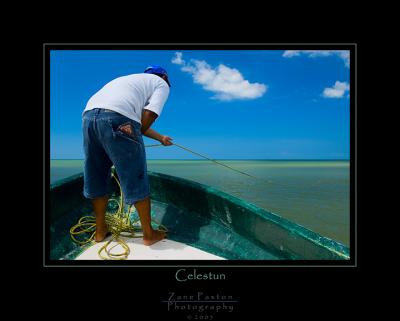 Pulling Anchor |
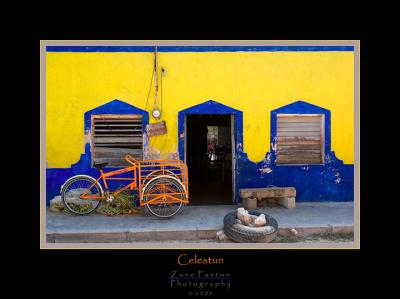 Facade |
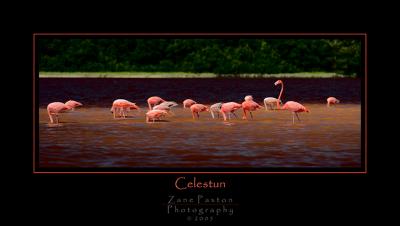 Flamingoes |
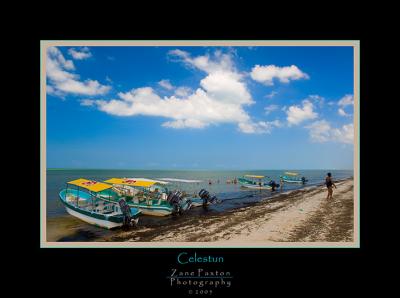 Boats on the Beach |
 Boats on Beach-2 |
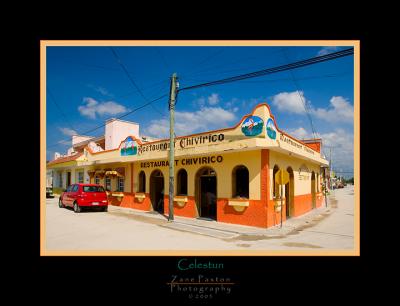 Restaurant |
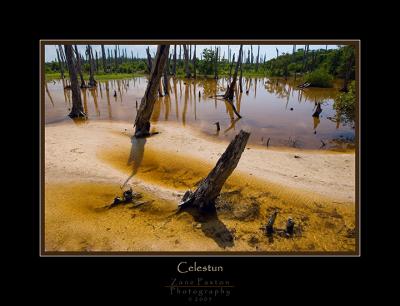 Stumps-1 |
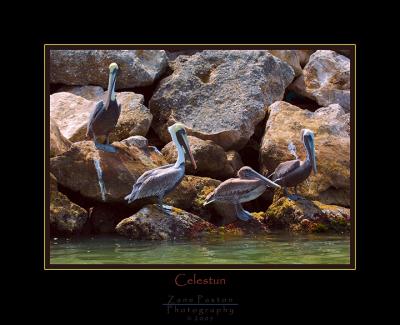 Pelicans |
| comment | share |
| Gus Rosenfeld | 01-Nov-2005 07:07 | |